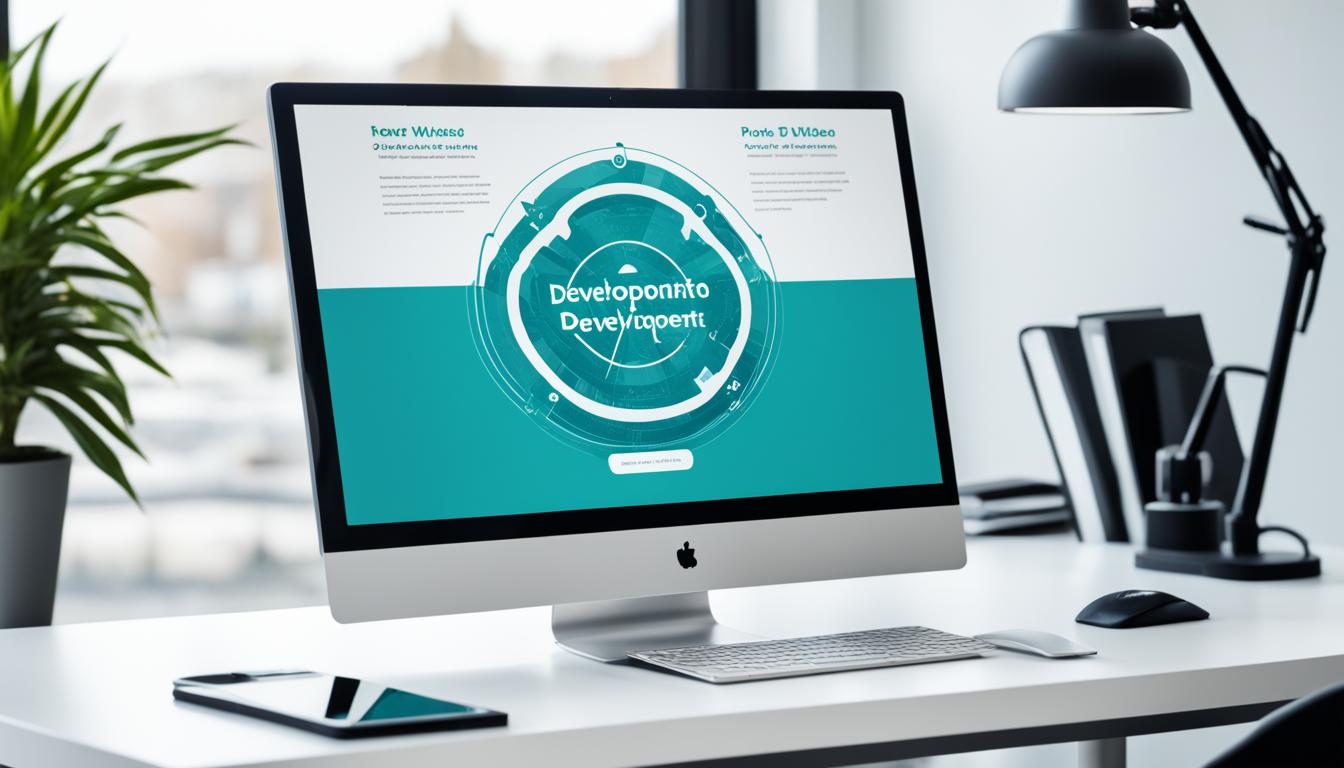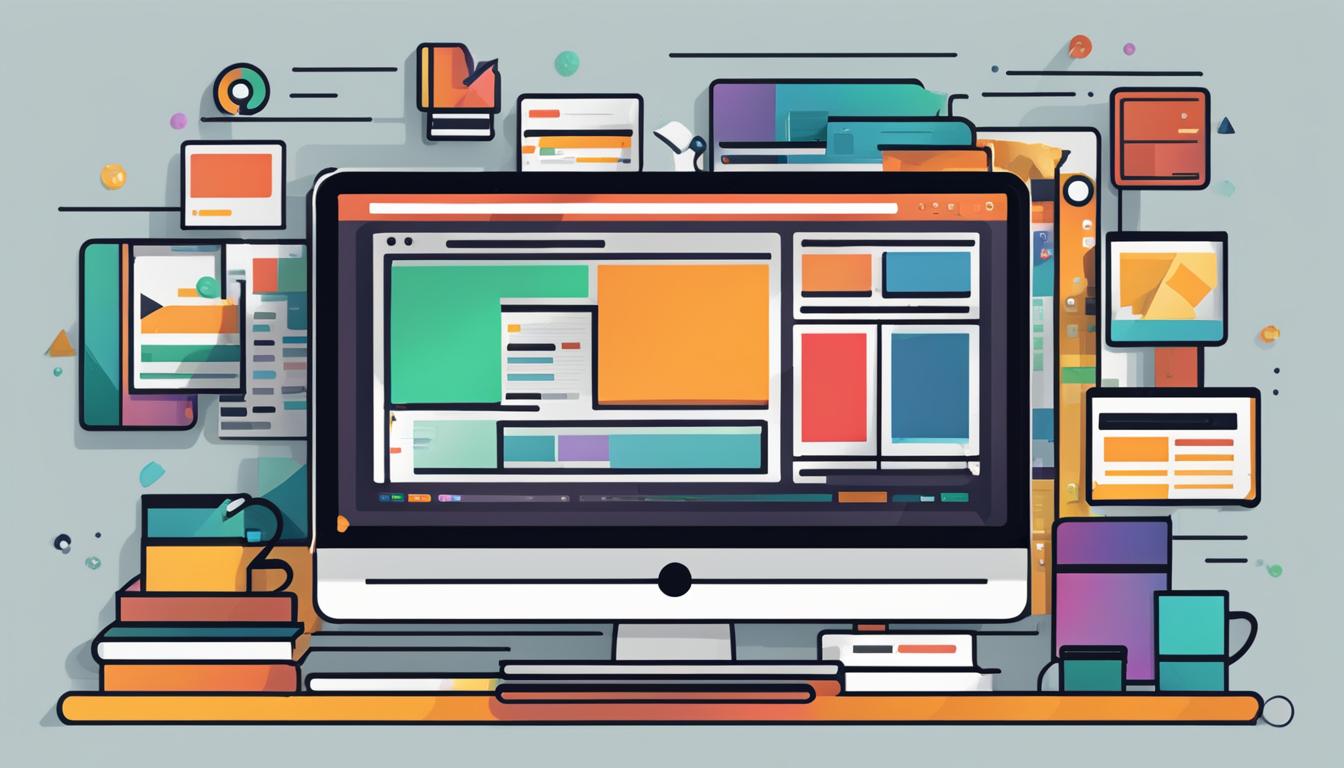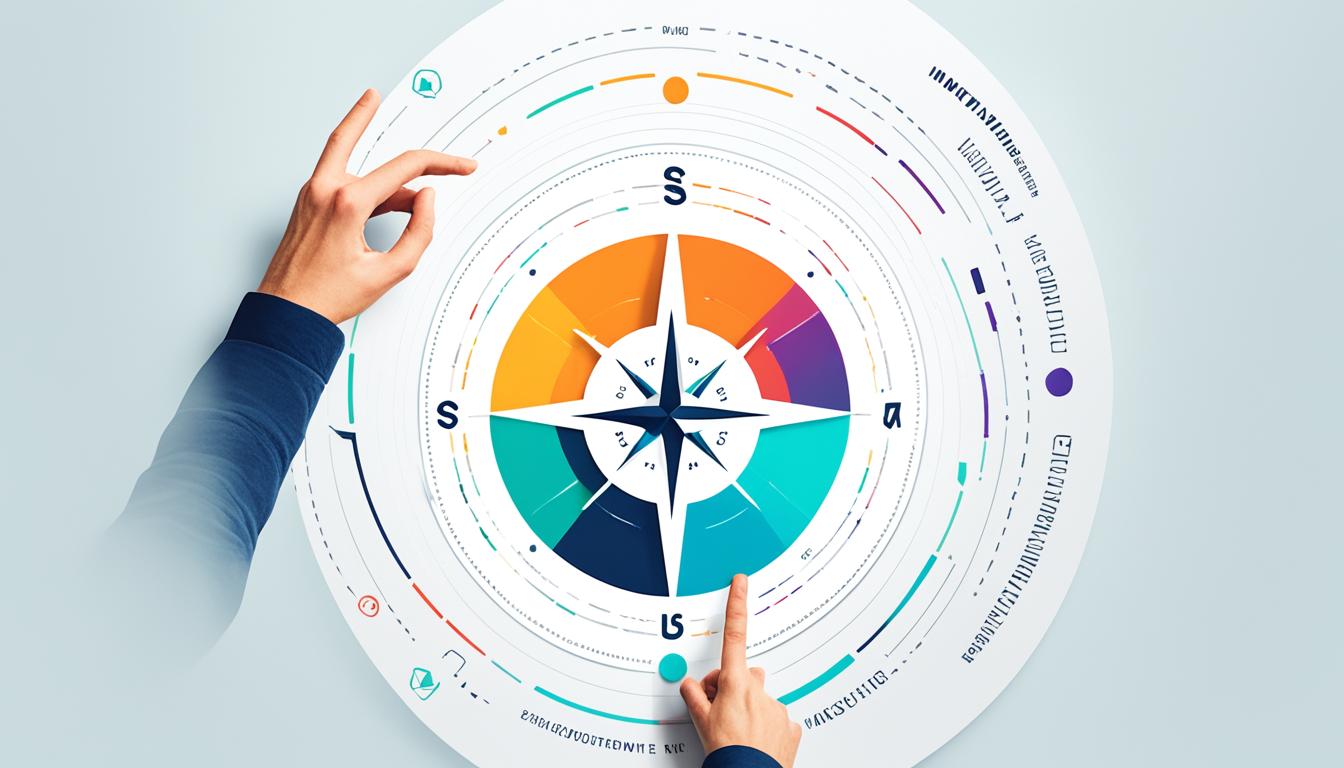The Ultimate Guide to Web Design for Beginners
Did you know that 75% of website credibility is attributed to its design?
When it comes to web design, first impressions matter. Within seconds of landing on a website, users form opinions about its credibility, trustworthiness, and overall experience. That’s why it’s essential for beginners to master the basics of web design to create visually appealing and user-friendly websites.
In this ultimate guide, I will take you through the fundamental principles and processes of web design. From understanding the importance of visual perception and typography to learning how to create a standout portfolio for freelance web design, this guide has got you covered.
Key Takeaways:
- Web design plays a significant role in establishing website credibility.
- Mastering the basics of web design is crucial for beginners.
- Understanding visual perception and typography is essential for creating visually appealing websites.
- A standout portfolio is vital for freelance web designers to attract high-quality clients.
Mastering Web Design Principles and Processes
In this section, I will guide you through the essential principles and processes of web design. Mastering these concepts is crucial to creating visually stunning and user-friendly websites. We will cover topics such as visual perception, typography, color theory, and responsive design. Additionally, I will provide insights into the design-to-development handoff, ensuring a seamless transition from design to development.
Understanding Web Design Principles
When it comes to web design, certain principles serve as the foundation for creating compelling and effective websites. Let’s explore some of these principles:
- Visual Perception: Understanding how users perceive and interact with visual elements on a website is essential in creating an intuitive user experience.
- Typography: The choice of fonts and how they are used can significantly impact both the aesthetics and readability of a website.
- Color Theory: Colors evoke emotions and play a vital role in conveying the brand identity. Comprehending color psychology and harmonious color schemes is key in web design.
- Responsive Design: With the increasing use of mobile devices, designing websites that adapt to different screen sizes and resolutions is crucial for providing a seamless user experience.
The Web Design Process
Creating a well-designed website involves a systematic process that ensures efficiency and effectiveness. Here are the key steps in the web design process:
- Define Goals and Requirements: Understanding the client’s goals and target audience is vital in shaping the design direction.
- Information Gathering: Collecting relevant assets, such as content, images, and brand guidelines, helps in creating a cohesive design.
- Wireframing and Prototyping: Visualizing the website structure and user flow through wireframes and prototypes allows for early feedback and refinement.
- Visual Design: Translating the wireframes into visually appealing designs that align with the brand and user experience goals.
- Design-to-Development Handoff: Ensuring a smooth transition of the design to the development team requires clear documentation, style guides, and collaboration.
- Testing and Iteration: Conducting usability tests and gathering user feedback helps identify areas for improvement and refinement.
- Launch and Maintenance: Once the website is launched, ongoing maintenance and updates are necessary to ensure optimal performance.
The design-to-development handoff is a critical stage in the web design process. It involves transferring the design files and specifications to the development team for implementation. Effective communication and documentation are essential to ensure that the design is faithfully converted into a functioning website. To facilitate a seamless handoff, checklists and style guides can be created to provide clear instructions and guidelines.
Mastering web design principles and processes empowers you to create visually stunning and user-friendly websites. By understanding the fundamental design principles and following a systematic process, you can effectively translate a client’s goals into an engaging online presence.
| Item | Description | Completed |
|—————————–|—————————————————————-|———–|
| Convert design to HTML/CSS | Transform the visual design into clean and responsive code | ✅ |
| Optimize image assets | Compress and optimize images for fast loading times | ✅ |
| Test cross-browser compatibility | Ensure the website works seamlessly on different browsers | ✅ |
| Check responsive design | Verify that the website adapts well to various screen sizes | ✅ |
| Validate HTML/CSS code | Ensure the code complies with web standards and is error-free | ✅ |
| Collaborate with the design team | Seek clarification and provide feedback for design-related queries | ✅ |
Freelancing in Web Design
Are you a web designer looking to take your career to the next level? Freelancing in web design can provide you with the freedom and flexibility to work on exciting projects while enjoying the benefits of being your own boss. In this section, I will share proven strategies for building a successful freelance business in web design and attracting high-quality clients.
Finding High-Quality Clients
One of the keys to a thriving freelance business is finding high-quality clients who appreciate your skills and are willing to pay for your expertise. Here are some effective strategies to connect with the right clients:
- Network within your industry: Attend conferences, join professional organizations, and connect with fellow web designers and developers to expand your network. Building relationships can lead to valuable referrals and collaborations.
- Showcase your work: Create a standout portfolio that showcases your best projects and highlights your unique design style. Your portfolio should demonstrate your ability to create visually stunning and functional websites.
- Utilize freelance platforms: Sign up for reputable freelance platforms such as Upwork and Freelancer. These platforms allow you to showcase your skills and bid on relevant projects, helping you reach a wider audience of potential clients.
Streamlining Your Freelance Business
Running a successful freelance business requires efficient processes and systems. Here are some tips to streamline your operations:
- Create clear contracts: Clearly define the scope of your work, project timelines, and payment terms in your contracts. This helps protect both parties and ensures a smooth working relationship.
- Set realistic deadlines: Manage client expectations by setting realistic deadlines for project deliverables. This allows you to maintain a consistent workflow and deliver high-quality work on time.
- Automate administrative tasks: Use project management tools and software to automate administrative tasks such as time tracking, invoicing, and client communication. This frees up your time to focus on design and client satisfaction.

Creating a Standout Portfolio
Your portfolio is a reflection of your skills and expertise. To attract high-quality clients, make sure your portfolio stands out from the competition:
- Showcase a variety of projects: Include a diverse range of web design projects in your portfolio to demonstrate your versatility and ability to cater to different industries and target audiences.
- Highlight results and client feedback: Include case studies that showcase the impact of your work on your clients’ businesses. Use metrics and testimonials to highlight the positive results you have achieved.
- Keep it updated: Regularly update your portfolio to showcase your latest work and skills. Remove outdated projects and focus on showcasing your best and most relevant work.
| Benefits of Freelancing in Web Design | Challenges of Freelancing in Web Design |
|---|---|
|
|
Designing for the User Experience
A great website design prioritizes the user experience. When designing a website, it is crucial to consider the needs and preferences of the users. By creating an intuitive and user-friendly design, you can enhance the overall experience and ensure visitors stay engaged on your site.
Information Architecture: Navigating with Ease
Information architecture refers to the organization and structure of a website’s content. It plays a vital role in making the navigation process seamless and intuitive for users. By strategically arranging the information and implementing logical categories and subcategories, you can make it easier for users to find the content they are looking for.
When creating an effective information architecture, consider implementing the following best practices:
- Use clear and descriptive labels for navigation menus
- Group related content together
- Implement breadcrumbs to provide users with a clear path back to previous pages
- Create a search feature that allows users to find specific information quickly
By optimizing your website’s information architecture, you can enhance the user experience and ensure that visitors can easily navigate through your site.
Visual Hierarchy: Guiding Users Through the Website
Visual hierarchy refers to the arrangement and presentation of elements on a web page, prioritizing their importance. It helps guide users through the website, ensuring that they focus on the most important elements first.

- Use size, color, and contrast to highlight important elements
- Group related content together using whitespace and borders
- Ensure that navigation menus and call-to-action buttons are easily distinguishable
By implementing a clear visual hierarchy, you can direct users’ attention and guide them through your website in a logical and intuitive manner.
Putting Design Principles into Practice
When it comes to web design, implementing design principles is essential for creating visually pleasing and functional websites. In this section, I will provide you with practical tips to help you apply these principles in your web design projects.
The first key aspect to consider is content strategy. A well-thought-out content strategy ensures that your website’s content is organized, relevant, and engaging. Take the time to understand your target audience and their needs. This will allow you to create a layout that effectively presents your content and guides users through the website seamlessly.
Layout is another crucial element in web design. By utilizing a clean and intuitive layout, visitors can easily navigate your website and find the information they are looking for. Remember to prioritize readability and balance in your design, making sure that the most important elements stand out and are easily accessible.
Typography plays a crucial role in enhancing the user experience. Choose fonts that are easy to read, and use them consistently throughout your website. Pay attention to font sizes and spacing to ensure optimal readability on different devices. Well-executed typography provides a sense of professionalism and adds to the overall aesthetics of your design.
Finally, embrace simplicity in your design. A clutter-free design not only enhances the user experience but also facilitates faster loading times. Keep your design elements clean and minimalistic, focusing on the core message you want to convey. By embracing simplicity, you create a visually appealing and user-friendly website.
FAQ
What are the basic principles of web design?
What is the design-to-development handoff in web design?
How can I find high-quality clients for my freelance web design business?
What is information architecture and why is it important in web design?
How can I effectively layout content on a web page?
What is the role of typography in web design?
How can simplicity in design improve a website?
- Shop for Server & Workstation Systems & more - February 25, 2025
- IP Geolocation API and IP Location Lookup Tools - February 24, 2025
- What is GoDaddy? Everything You Need to Know in 2024 - February 23, 2025





















Post Comment
You must be logged in to post a comment.